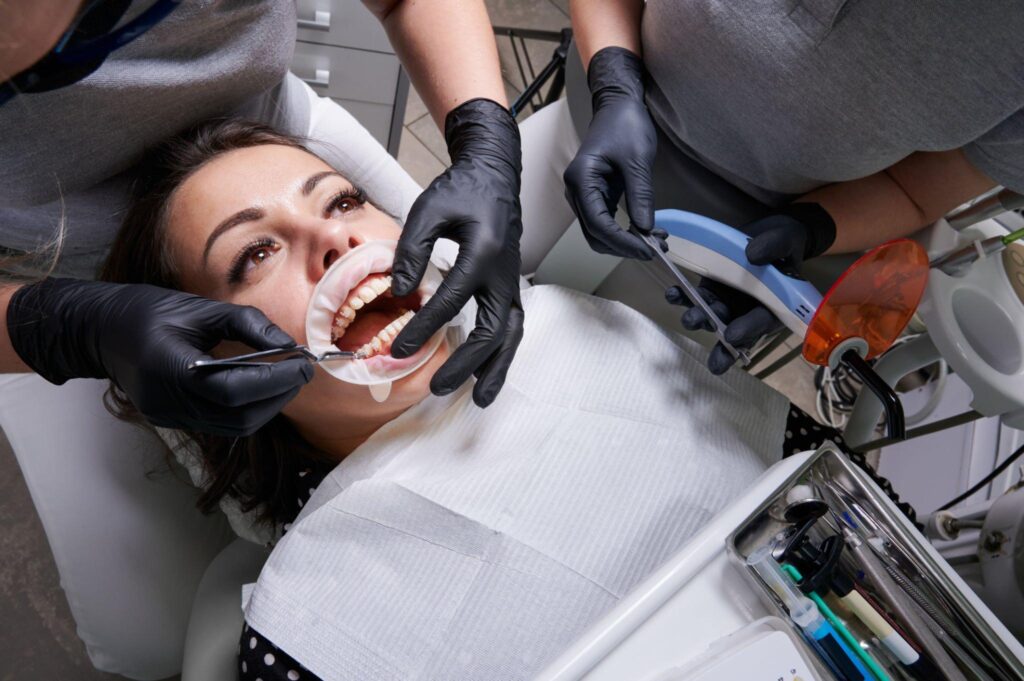Cosmetic dentistry is a branch of dentistry that focuses on enhancing the appearance of a person’s teeth, gums, and smile. It involves various procedures and treatments aimed at improving the aesthetic appeal of the mouth while also ensuring oral health. With advancements in dental technology and techniques, cosmetic dentistry has become increasingly popular, offering individuals the opportunity to achieve their desired smile makeover.
Introduction
In this article, we will explore the field of cosmetic dentistry, its various procedures, and the benefits it offers to individuals seeking to improve their smiles. From teeth whitening to smile makeovers, cosmetic dentistry provides an array of solutions for enhancing dental aesthetics.
Common Cosmetic Dental Procedures
Cosmetic dentistry encompasses a range of procedures that address different aspects of dental aesthetics. Some of the most common treatments include:
Teeth Whitening
Teeth whitening is a popular cosmetic dental procedure that aims to brighten and whiten discolored or stained teeth. This procedure can effectively remove stains caused by food, beverages, smoking, or natural aging, resulting in a brighter and more youthful smile.
Dental Veneers
Dental veneers are thin, custom-made shells made of porcelain or composite resin that are bonded to the front surface of teeth. They can improve the appearance of teeth by correcting imperfections such as discoloration, chips, or gaps. Veneers provide a natural-looking and durable solution for achieving an attractive smile.
Dental Implants
Dental implants are artificial tooth roots that are surgically placed into the jawbone to replace missing teeth. They provide a sturdy foundation for dental restorations such as crowns, bridges, or dentures. Dental implants not only restore functionality but also enhance the appearance of the smile by filling in gaps and preventing bone loss.
Dental Bonding
Dental bonding involves applying a tooth-colored resin material to repair minor imperfections such as chips, cracks, or gaps in teeth. The resin is bonded and sculpted to match the natural tooth shape, resulting in an improved smile.
Invisalign
Invisalign is an orthodontic treatment that utilizes a series of clear, removable aligners to gradually straighten misaligned or crooked teeth. This discreet and comfortable alternative to traditional braces offers adults and teenagers a more aesthetically pleasing way to achieve a straighter smile.
Gum Contouring
Gum contouring, also known as gum reshaping, is a procedure that involves removing excess gum tissue to improve the appearance of a “gummy” smile or to create a more balanced gum line. It can provide a harmonious and proportional frame for the teeth, enhancing the overall smile.
Dental Crowns
Dental crowns, also referred to as caps, are custom-made restorations that cover damaged or severely decayed teeth. They not only strengthen and protect the tooth but also improve its appearance, shape, and alignment. Dental crowns can be made from various materials, including porcelain, metal, or a combination of both.
Smile Makeovers
Smile makeovers involve a comprehensive assessment and combination of cosmetic dental procedures tailored to address specific aesthetic concerns. This personalized approach may include a combination of teeth whitening, veneers, dental implants, and other treatments to achieve the desired smile transformation.
Choosing a Cosmetic Dentist
Selecting the right cosmetic dentist is crucial for achieving satisfactory results. Consider the following factors when choosing a cosmetic dentist:
- Credentials and qualifications: Look for a dentist who has received proper education, training, and certification in cosmetic dentistry.
- Experience: Find a dentist with ample experience in performing the specific cosmetic procedures you are interested in.
- Before-and-after photos: Request to see before-and-after photos of previous patients to assess the dentist’s skill and the quality of their work.
- Patient reviews and testimonials: Read reviews or seek recommendations from others who have undergone cosmetic dental treatments.
- Communication and comfort: Choose a dentist with whom you feel comfortable discussing your concerns and who actively listens and addresses your questions.
Aftercare and Maintenance
Maintaining good oral hygiene practices and following the dentist’s instructions are vital for the longevity of cosmetic dental treatments. Some general aftercare tips include:
- Brushing and flossing: Maintain a regular oral hygiene routine by brushing twice a day and flossing daily to keep your teeth and gums healthy.
- Avoiding staining agents: Minimize the consumption of foods and beverages that can stain teeth, such as coffee, tea, and red wine.
- Regular dental visits: Schedule regular check-ups and professional cleanings to monitor your oral health and ensure the longevity of cosmetic treatments.
- Protective measures: If you engage in sports or grind your teeth, consider using a mouthguard or nightguard to protect your teeth from damage.
Conclusion
Cosmetic dentistry offers a wide range of solutions to enhance the appearance of smiles and boost self-confidence. From teeth whitening and veneers to dental implants and smile makeovers, individuals have various options to achieve their desired aesthetic results. By considering the factors discussed and selecting a skilled cosmetic dentist, individuals can embark on a journey to transform their smiles and improve their overall oral health.
Frequently Asked Questions
No, cosmetic dentistry also focuses on improving oral health and restoring functionality.
Most cosmetic procedures are performed under local anesthesia, ensuring minimal discomfort during the treatment.
The longevity of cosmetic treatments depends on various factors, including the type of procedure and proper maintenance.
Yes, cosmetic dentistry offers solutions such as Invisalign and veneers to address misaligned or crooked teeth.
In general, cosmetic procedures are not typically covered by insurance, as they are considered elective. However, it’s best to check with your insurance provider for specific coverage details.

